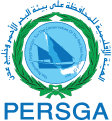Biodiversity
The marine resources of the Red Sea and Gulf of Aden have provided prosperity for the region for many centuries by providing food, trade and livelihoods. However, in recent years, these marine resources are facing many threats, including over-exploitation of species, destruction of spawning, nursery and feeding grounds, pollution, improper resource management and weak governance.
The large marine ecosystem of the Red Sea and Gulf of Aden is a tremendous natural capital asset for PERSGA countries, providing fish and supporting tourism among several other income generating activities. This stems from the high biodiversity and variety of habitats that support significant numbers of commercial fish species both for the food and aquarium industry. The narrow width and great depth of this ecosystem present both advantages and challenges for sustainable management, especially when considering the tremendous shipping activity. Both fish stock depletion and habitat deterioration are of considerable concern. Appropriate management of fisheries and Marine Protected Areas (MPAs) for sustaining living resources is thus essential. Priority issues identified for effective implementation of fisheries and MPA management include lack of capacities and sufficient awareness/knowledge among different stakeholders, both in the local communities and among government officials. Most of the member states have recently revised/ or are in the process of revising fisheries policies and regulations, and have also developed management plans involving wide stakeholders consultation.
PERSGA developed regional protocol concerning the conservation of biodiversity and the establishment of network of protected areas in the Red Sea and Gulf of Aden. The protocol was signed in 2005 to maintain the safety and integrity of ecosystems conserve biodiversity and protect threatened species, critical habitats and sites of importance in the region.


